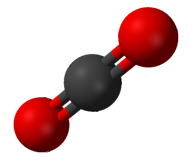It is expected that global warming will see sea temperatures rise by 2-4 degrees. This, along with rising levels of carbon dioxide, is already causing dramatic changes to the central nervous system of fish in our seas with consequences for their future survival.
Professor Goran Nilsson from the University of Oslo says, “Some fish species will do well and some will do very poorly, so we will have much less biodiversity. A few species will take over at the cost of a lot of species that will disappear.
“At just a few degrees increase in temperature you see a big increase in the resting metabolic rate. Some species are using all their capacities just to pick up oxygen and have no energy left to feed, grow or reproduce. They are at an evolutionary dead end.
“In addition, we have seen that increases in carbon dioxide levels have big impact on fish behaviour, affecting their ability to avoid predators. Instead of shying away from the smell of a predator, the fish are attracted to it. They are also attracted to new plant smells, unusual environments, and they lose their lateralization which means it takes longer to make decisions when escaping a predator.”
Nilsson’s team identified the neurological mechanism underlying these changes in behaviour and survival. Elevated CO2 levels in sea water disrupt the function of a key brain molecule, called the GABA-A receptor.
Nilsson says, “We can cure the fish by blocking this receptor with a moderate dose of a drug called Gabazine. This can reverse the behavioral changes and the fish behave normally again. While we cannot fill the seas with Gabazine, this finding does give us some predictive power. We can now identify the animals most at risk of being affected, guiding us where to do future experiments.”
 |
| ball-and-stick model of CO2: carbon dioxide (Photo credit: Wikipedia) |


No comments:
Post a Comment